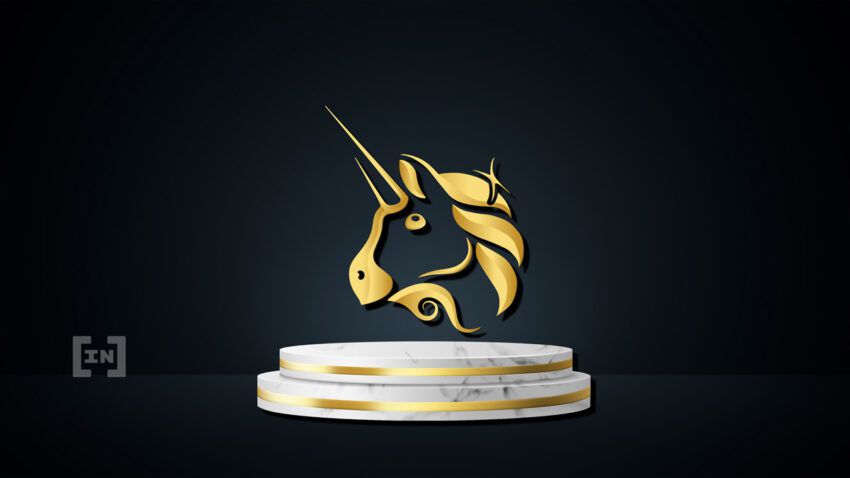Uniswap investors need think about what they can do with their UNI token, says Tina Chu, the VP of Marketing and Growth at Cabital.
Decentralized exchanges have grown in importance due to regulations surrounding centralized exchanges. Uniswap has recently become the largest decentralized exchange (DEX) in the world.
As the native token of the Uniswap decentralized exchange, UNI is the token that powers the DEX. It is awarded to investors who stake their assets, and also acts as a governance token.
A governance token effectively gives holders voting rights on issues concerning the DEX. This allows owners of UNI to participate in decisions on how the network operates and benefit from the rising value of decentralized exchanges over time.
UNI holders who hold 1% or more of the total UNI supply have the opportunity to submit development proposals. In essence, the value of UNI tokens correlates with the inherent value investors see with the Uniswap exchange.
Uniswap: Potential drawbacks of investing
Decentralized exchanges have come under severe scrutiny by regulators, who are gunning to enforce regulations, centralization, and ultimately, the demise of DEX. Whether the Securities and Exchange Commission (SEC) or any regulatory body cracks down on Uniswap or any of its peers in a meaningful way remains to be seen. Naturally, if the Uniswap DEX comes under attack, the token’s price will plummet, leading to substantial investment losses.
Uniswap compared to Bitcoin and Ethereum
Although both tokens fall under the cryptocurrency category, they’re quite different. It’s like comparing different stocks with each other. These two tokens have dramatically different market caps, supply, and use cases. Furthermore, they differ in terms of their respective blockchains.
Once again, the use cases, market caps, and so on, are very different. However, the similarity between ETH, Ethereum’s native token, and the UNI token are that both operate on Ethereum’s blockchain architecture.
However, ETH operates on Layer 1, while UNI operates on Layer 2. In the decentralized ecosystem, a Layer-1 network refers to a blockchain, while a Layer-2 protocol is a third-party integration that can be used in conjunction with a Layer-1 blockchain. As a solution, developers create layer-2 protocols that rely on the Layer-1 network for consensus and security.
ERC20 is a standard used for creating and issuing smart contracts on the Ethereum blockchain. The majority of tokens on Ethereum’s Layer 2 are in fact, ERC20 tokens. That’s why users of the Uniswap DEX need to pay gas fees with ETH.
What should investors look for when choosing a crypto exchange
Investors should consider the following five critical points:
1. Whether the DEX is available in their particular jurisdiction;
2. It’s vital to check the exchange’s relevant policies and T&Cs;
3. Whether the DEX is reputable;
4. Confirming that there are adequate security measures put into place to protect assets;
5. Conducting due diligence regarding the DEX’s fees and volume – the more secure exchanges charge a higher transaction rate. A DEX with a high volume refers to the number of trades in 24 hours. A higher number of trades indicate higher liquidity which is essential.
How much of someone’s portfolio should be invested in crypto and what factors affect that percentage?
The percentage of your portfolio is affected by your current financial position and future financial planning. Your risk appetite is the critical factor in affecting that percentage. Don’t invest what you can’t afford to lose.
Uniswap: General advice for someone considering investing
Firstly, educate yourself about the UNI token. Learning about Uniswap starts with the Uniswap exchange that offers peer-to-peer trading.
Secondly, think about what you can do with your UNI token. You can choose the “add liquidity” option to lend crypto to any liquidity pools with the UNI token option.
Lastly, be aware that investing in crypto can be extremely risky. Investors should approach these assets like any other technological investment – with a long-term mindset and the expectation of ups and downs.
About the author

Tina Chu has worked across the Asia Pacific and European regions. She has served on the committee for Wharton International Business Conference in Hong Kong. Currently, Tina is the VP of Marketing and Growth at Cabital (an Asian Crypto Asset Management Platform). She is an award-winning marketing and growth leader with leadership experience in top tech companies including Tencent, Expedia and Nokia, and Klook. Tina has led global teams to drive user growth for major products at both Tencent JOOX (SEA #1 Music Streaming app) and Klook App (Asia’s largest online travel agency). Tina holds an MBA degree from University of Pennsylvania’s prestigious Wharton School of Business School.
Got something to say about Uniswap or anything else? Write to us or join the discussion in our Telegram channel. You can also catch us on Tik Tok, Facebook, or Twitter.
Disclaimer
All the information contained on our website is published in good faith and for general information purposes only. Any action the reader takes upon the information found on our website is strictly at their own risk.


